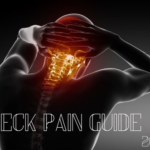Allergies are among the most common chronic conditions globally, impacting millions of individuals each year. They occur when the immune system overreacts to substances that are typically harmless. These substances, known as allergens, can range from food to pollen, dust mites to insect venom. Understanding the types of allergies, common symptoms, and effective treatments is crucial for managing allergic reactions and improving quality of life.
Types of Allergies
1. Food Allergies
Food allergies occur when the immune system reacts abnormally to specific proteins found in food. Common food allergens include:
Symptoms can range from mild to severe, including hives, swelling, digestive issues, and in severe cases, anaphylaxis, a life-threatening reaction that requires immediate medical attention.
2. Seasonal Allergies (Hay Fever)
Also known as allergic rhinitis, this allergy is triggered by pollen from trees, grasses, and weeds. It is especially prevalent during spring and fall. Symptoms typically include:
- Sneezing
- Runny or stuffy nose
- Itchy, watery eyes
- Coughing
3. Skin Allergies
Dermatological allergic reactions can manifest as:
- Eczema (atopic dermatitis) – Chronic itchy rash
- Contact dermatitis – Skin inflammation caused by contact with allergens like nickel, latex, or poison ivy
- Urticaria (hives) – Raised, red, itchy welts on the skin
4. Drug Allergies
Certain medications can trigger allergic reactions. Common culprits include:
- Penicillin
- Nonsteroidal anti-inflammatory drugs (NSAIDs)
- Anticonvulsants
- Chemotherapy drugs
Symptoms may include skin rashes, swelling, wheezing, and anaphylaxis.
5. Insect Sting Allergies
Some individuals react severely to insect stings from:
Allergic reactions can cause swelling at the sting site, hives, respiratory distress, and anaphylaxis.
6. Mold Allergies
Mold spores are common allergens, particularly in damp environments. Reactions often mimic hay fever symptoms but can also trigger asthma in sensitive individuals.
7. Pet Allergies
Proteins found in an animal’s skin cells, saliva, or urine can cause allergic reactions. Cats and dogs are the most common sources. Symptoms include sneezing, nasal congestion, and asthma exacerbations.
Common Symptoms of Allergies
Allergic symptoms vary depending on the type of allergen and the individual’s sensitivity but generally include:
- Sneezing
- Runny or congested nose
- Itchy or watery eyes
- Hives or skin rashes
- Swelling (especially of lips, face, or throat)
- Wheezing and shortness of breath
- Nausea, vomiting, or diarrhea
- Anaphylaxis
Recognizing these symptoms early is vital, especially in severe cases where immediate treatment is necessary.
Diagnosis of Allergies
1. Medical History Review
An allergist begins with a thorough review of symptoms, family history of allergies, and exposure history.
2. Skin Prick Test (SPT)
This involves applying a small amount of allergen to the skin and pricking the surface to observe for reactions like redness or swelling.
3. Blood Tests
Specific IgE blood tests measure the immune system’s response to particular allergens and are useful when skin tests aren’t possible.
4. Elimination Diet
For food allergies, removing suspected allergens from the diet under medical supervision helps identify the source.
Treatment Options for Allergies
1. Avoidance of Allergens
The most effective way to manage allergies is to avoid exposure to known triggers. This includes:
- Using HEPA filters for air purification
- Keeping windows closed during high pollen seasons
- Regularly cleaning to reduce dust mites and mold
- Avoiding certain foods and medications
2. Medications
- Antihistamines – Relieve symptoms like sneezing, itching, and runny nose
- Decongestants – Reduce nasal congestion
- Corticosteroids – Reduce inflammation in nasal passages, skin, or lungs
- Epinephrine (Adrenaline) – Emergency treatment for anaphylaxis; typically administered via auto-injectors (e.g., EpiPen)
3. Immunotherapy
Allergy shots or sublingual tablets gradually desensitize the immune system to allergens. This treatment is particularly effective for pollen, dust mites, and insect venom.
Long-Term Management of Allergies
1. Allergy-Proofing Your Environment
Implementing strategies to reduce allergen exposure at home or work is essential:
- Use dust-mite-proof covers on pillows and mattresses
- Remove carpets and heavy drapes
- Fix leaky pipes and reduce humidity to prevent mold growth
- Bathe pets regularly and keep them out of bedrooms
2. Personalized Allergy Action Plans
People with severe allergies should work with healthcare providers to develop an emergency action plan, especially for food or insect venom allergies. This includes:
- Recognizing early symptoms of anaphylaxis
- Carrying epinephrine auto-injectors
- Notifying schools, workplaces, or caregivers
3. Nutritional and Lifestyle Support
- Anti-inflammatory diets rich in omega-3s, antioxidants, and vitamin D may help reduce allergic inflammation
- Regular exercise supports lung health and immune function
- Stress management techniques such as meditation may reduce flare-ups triggered by emotional stress
When to See an Allergist
If you experience persistent or severe allergic symptoms, or if over-the-counter medications aren’t effective, consulting an allergist or immunologist is recommended. Early intervention can prevent complications such as asthma, sinus infections, or chronic fatigue.
Emerging Treatments and Research
Cutting-edge research is leading to novel treatments for allergies, including:
- Biologics like monoclonal antibodies (e.g., Omalizumab) for severe asthma and chronic hives
- Probiotics and gut microbiome therapy
- Gene editing and immunomodulation for future cures
Keeping abreast of medical advancements ensures optimal management strategies for allergic individuals.
Conclusion
Allergies, though common, are highly individualized conditions that can significantly impact daily life. Through accurate diagnosis, vigilant avoidance, appropriate medication, and long-term management strategies, individuals can lead full and active lives despite allergic sensitivities.



Great information
Any informative article about eyeside weakness